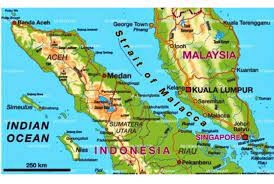
In the early 19th century between 1830 and 1850, gambier gardens became the belle of the world's spices. In the book A General History of the Chinese in Singapore (2019) it is stated that England was recorded as the largest importer of gambier starting in 1849. At that time gambier was used as a leather tanner. Singapore became the largest trading node before being marketed to Europe.
Singapore imports large quantities of gambier from Bintan. The area is famous as the place where Sultan Mahmud transferred his power when Malacca fell to the Portuguese in 1511. Bintan, which is located in the Singapore Strait or the Riau Strait, is a legendary name recorded in the chronicles of several explorers such as Marco Polo and Ibn Said, at least since the 19th century. 13.
Even Marco Polo called Bintan the nickname "Spice Market". Likewise Bintan was recorded in Chinese chronicles from the 14th to the 19th centuries. Bintan itself has had tribute relations during the Yuan Dynasty (1259-1368). Tanjung Pinang is a bustling point of international spice trading port.
According to local residents, the name Tanjung Pinang is taken from its position which juts into the sea, which is overgrown with a kind of betel nut. The tree on the promontory is a guide for sailors who will enter the Bintan River. This city is the entrance to the Bintan River. This is where the activities of the Bentan kingdom and the center of Malay culture, as well as trade traffic. Tanjung Pinang is inseparable from the Johor-Riau Malay Kingdom.
Tanjung Pinang is a trace of the famous Malay Riau Lingga Kingdom on Bintan Island. It's not complete if you don't visit the Chinatown area in the city area and Senggarang Island. Willem Pieter Groeneveldt in his book Notes on the Malay Archipelago and Malacca Compiled from Chinese Sources explains that the name Long Ya Men is located southwest of Palembang. In that area there are two mountains (high hills) facing each other like a dragon's teeth. Ships will pass between the two.
Chinese immigrants began to inhabit the Riau Archipelago in the early 18th century. They are the Teochiu tribe brought by the VOC around 1734-1740. The goal, to open gambier plantations. At that time Bintan (in Tanjung Pinang) was a major port of exchange for rice and gambier from Java. This island is also the berth of international ships. Finally, the gambier trade was controlled by the Riau Lingga aristocratic family and Chinese businessmen.
In Tanjung Pinang there were several large-scale gambir warehouses located on the coast of the city. The early 20th century saw a decline in demand for gambier. As a result, the spread of gambier in Sumatra is no longer rife in the market. Currently Indonesian gambir has been named the best quality gambir in the world. Indonesia supplies 80 percent of the world's gambier needs
Follow firmandads to stay updated on their latest posts!
0 comments
Be the first to comment!
This post is waiting for your feedback.
Share your thoughts and join the conversation.
